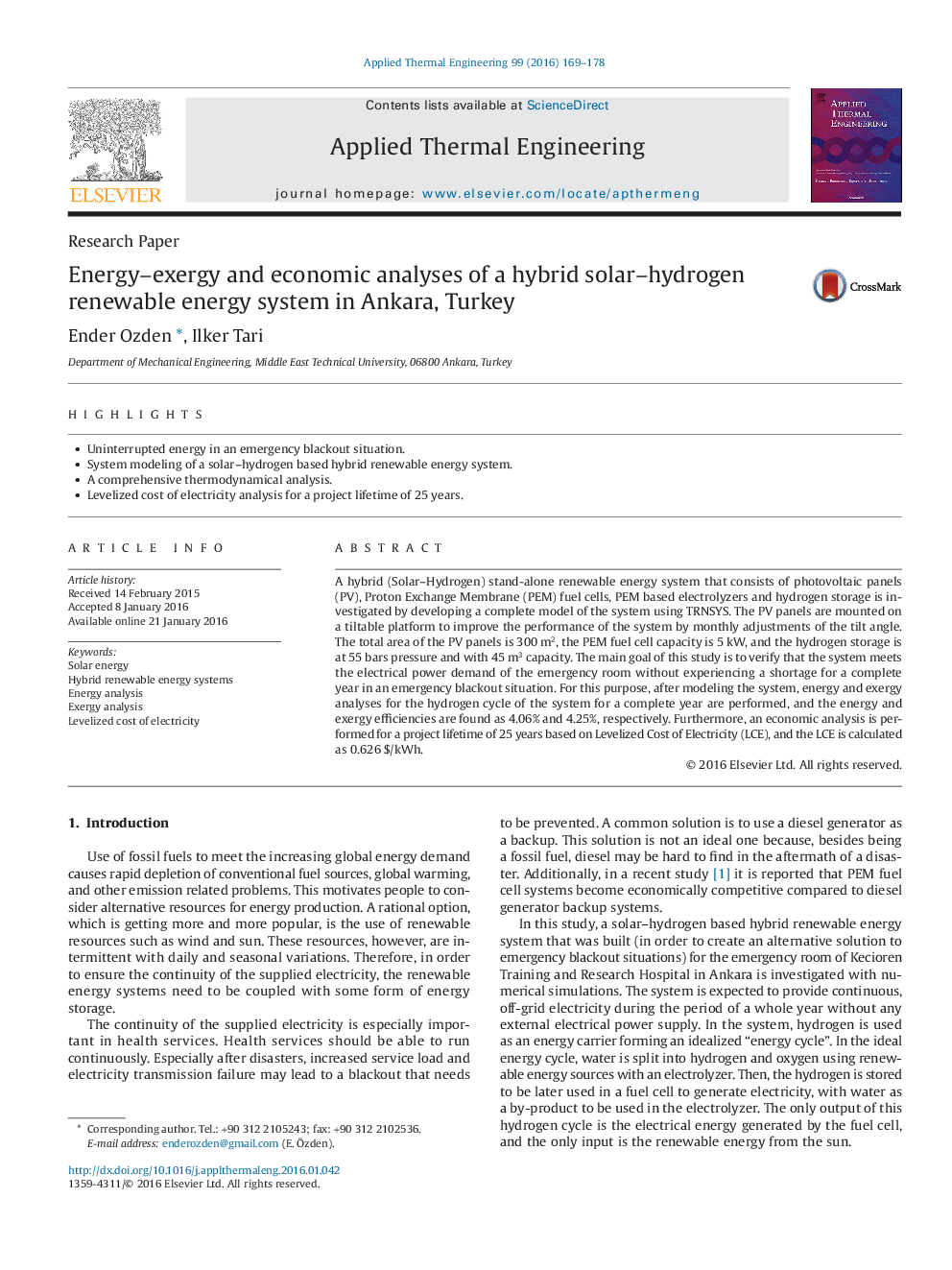| Article ID | Journal | Published Year | Pages | File Type |
|---|---|---|---|---|
| 644669 | Applied Thermal Engineering | 2016 | 10 Pages |
•Uninterrupted energy in an emergency blackout situation.•System modeling of a solar–hydrogen based hybrid renewable energy system.•A comprehensive thermodynamical analysis.•Levelized cost of electricity analysis for a project lifetime of 25 years.
A hybrid (Solar–Hydrogen) stand-alone renewable energy system that consists of photovoltaic panels (PV), Proton Exchange Membrane (PEM) fuel cells, PEM based electrolyzers and hydrogen storage is investigated by developing a complete model of the system using TRNSYS. The PV panels are mounted on a tiltable platform to improve the performance of the system by monthly adjustments of the tilt angle. The total area of the PV panels is 300 m2, the PEM fuel cell capacity is 5 kW, and the hydrogen storage is at 55 bars pressure and with 45 m3 capacity. The main goal of this study is to verify that the system meets the electrical power demand of the emergency room without experiencing a shortage for a complete year in an emergency blackout situation. For this purpose, after modeling the system, energy and exergy analyses for the hydrogen cycle of the system for a complete year are performed, and the energy and exergy efficiencies are found as 4.06% and 4.25%, respectively. Furthermore, an economic analysis is performed for a project lifetime of 25 years based on Levelized Cost of Electricity (LCE), and the LCE is calculated as 0.626 $/kWh.
